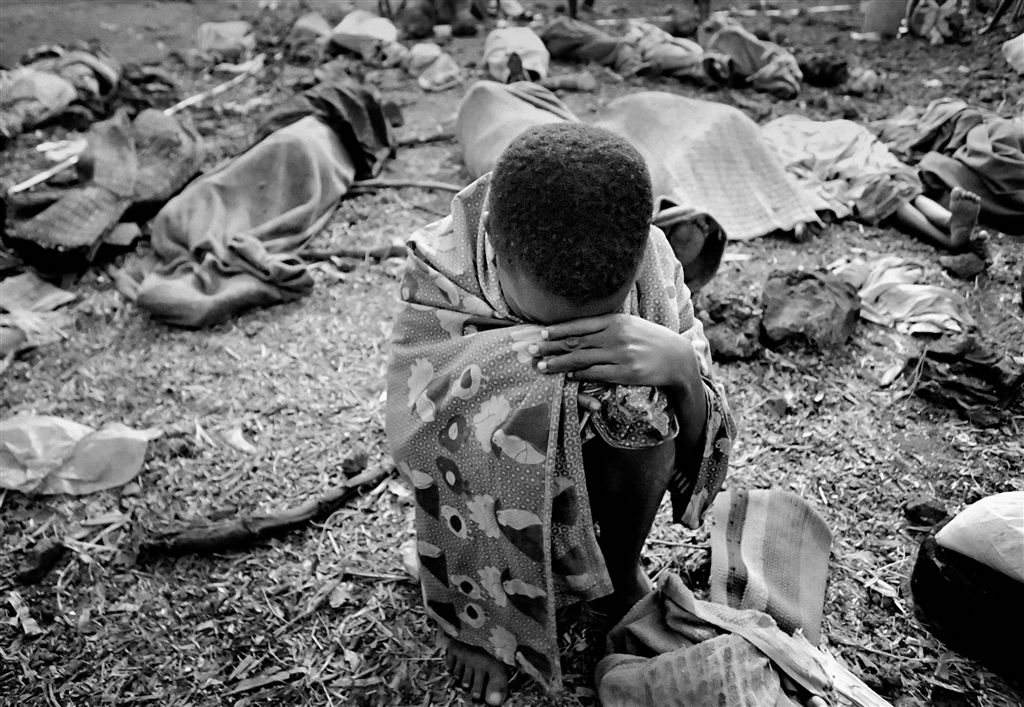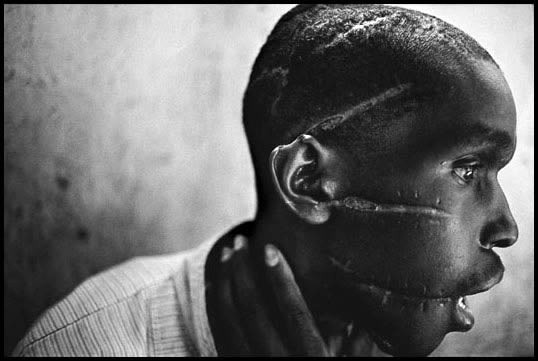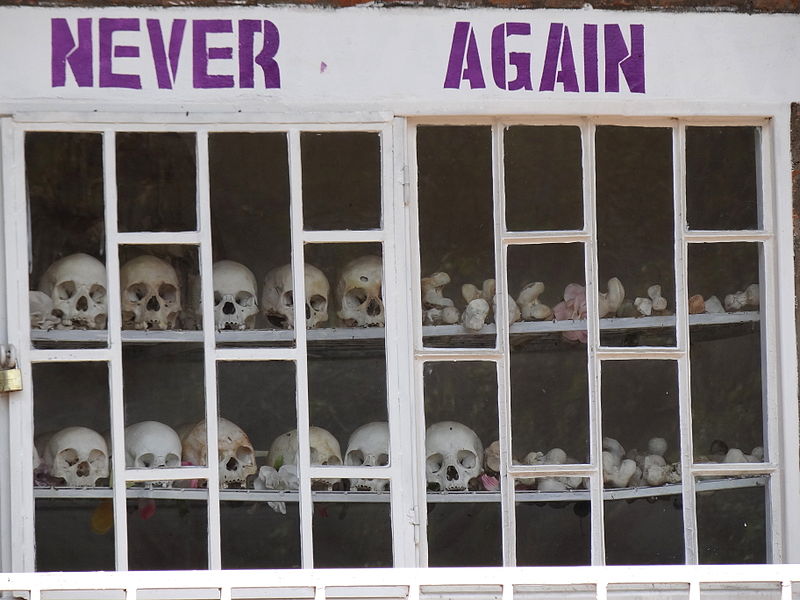
Today marks twenty years since the onset of the Rwandan Genocide. On 7 April 1994 began the worst instance of genocide since World War II, when members of the Rwanda’s Hutu majority slaughtered an estimated 800,000 Tutsis and moderate Hutus in one hundred days of hell.
The sheer scale of this atrocity staggers the mind and heart, with roughly 70% of the Tutsi population killed at that time. Magnifying the horror was the chillingly brutal way in which the killings were carried out. Most of those killed were hacked to death with machetes, sometimes after watching their loved ones tortured, raped, or killed first. The UN Special Representative to Rwanda at the time, Shaharyar Khan, says in The Shallow Graves of Rwanda, “The Interahamwe made a habit of killing young Tutsi children, in front of their parents, by first cutting off one arm, then the other. They would then gash the neck with a machete to bleed the child slowly to death but, while they were still alive, they would cut off the private parts and throw them at the faces of the terrified parents, who would then be murdered with slightly greater dispatch.”
 The immensity of this tragedy sears in our minds, but in remembering the Rwandan Genocide, we must move beyond scale and statistics, and grasp that each life lost represents a family, a community, a nation changed forever. The Outreach Programme on the Rwanda Genocide and the United Nations features testimonies from survivors, and I urge you to read a few. This will be difficult reading, but the words of the survivors are crucial in capturing the reality of the pain they endured, and also a necessary step to ensuring that such atrocities never happen again.
The immensity of this tragedy sears in our minds, but in remembering the Rwandan Genocide, we must move beyond scale and statistics, and grasp that each life lost represents a family, a community, a nation changed forever. The Outreach Programme on the Rwanda Genocide and the United Nations features testimonies from survivors, and I urge you to read a few. This will be difficult reading, but the words of the survivors are crucial in capturing the reality of the pain they endured, and also a necessary step to ensuring that such atrocities never happen again.
How could this mass murder be perpetrated so widely and for so many endless weeks while the international community stood idly by? In the aftermath of the genocide, UN Secretary-General Boutros Boutros-Ghali stated to Frontline news that “the failure of Rwanda is 10 times greater than the failure of Yugoslavia. Because in Yugoslavia the international community was interested, was involved. In Rwanda nobody was interested.”
Why is that? “Are all humans human? Or are some more human than others?” asks Roméo Dallaire in Shake Hands With the Devil. Are we more willing to go to the aid of someone who is more like us, or does every human count in our fight for human rights? Dallaire recognizes this slippery slope: “How do we pick and choose where to get involved? Canada and other peacekeeping nations have become accustomed to acting if, and only if, international public opinion will support them – a dangerous path that leads to a moral relativism in which a country risks losing sight of the difference between good and evil, a concept that some players on the international stage view as outmoded.”
So today, twenty years after the outbreak of this harrowing brutality, we reflect on the hundreds of thousands of Rwandans who were butchered, but we should also reflect on the great failure of the international community to intervene. Most importantly, today we should ask ourselves: Have we learned anything from this great tragedy? If it happened today, would the Western world take notice and act immediately and decisively to end the violence and spare lives, in Africa or elsewhere?
At the Sentinel Project it is our mandate to engage people in preventing atrocities. We work to shed light on situations that teeter on the brink of costing many lives, and we do so with the intention of preventing such violence. We use the technology available to design and implement early warning systems so that the tragic narrative of Rwanda never repeats itself.
Sometimes, I get terribly sad because I can’t imagine what my life will be like. I’ll never see my parents again, and yet I’ll see the people who killed them, and those people’s children, for the rest of my life. I can’t bear the thought of it.
Donata, age 11, Quote displayed at the Genocide Memorial Centre in Kigali

Sources:
Dallaire, Roméo, and Brent Beardsley. Shake Hands with the Devil: The Failure of Humanity in Rwanda. New York, NY: Carroll & Graf, 2005
History.com The Rwandan Genocide 2009 http://www.history.com/topics/rwandan-genocide
Khan, Shaharyar M. The Shallow Graves of Rwanda. London: I.B. Tauris, 2000
Photos: (1) by Jan Grarup (2) by James Nachtey (3) by Adam Jones, Ph.D.
